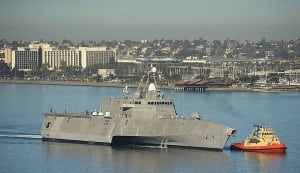
The Navy is weeks away from announcing the final design for two reduced-weight sonar systems that the Littoral Combat Ship (LCS) will deploy to hunt submarines, the service’s program manager told Defense Daily in a Jan. 29 interview.The service in 2015 awarded contracts to Raytheon [RTN], Advanced Acoustic Concepts and L-3 Communications [LLL] to drive down the weight of two core systems from the LCS’ anti-submarine warfare (ASW) mission module—the variable depth sonar and a passive multifunction towed array sonar—to…













